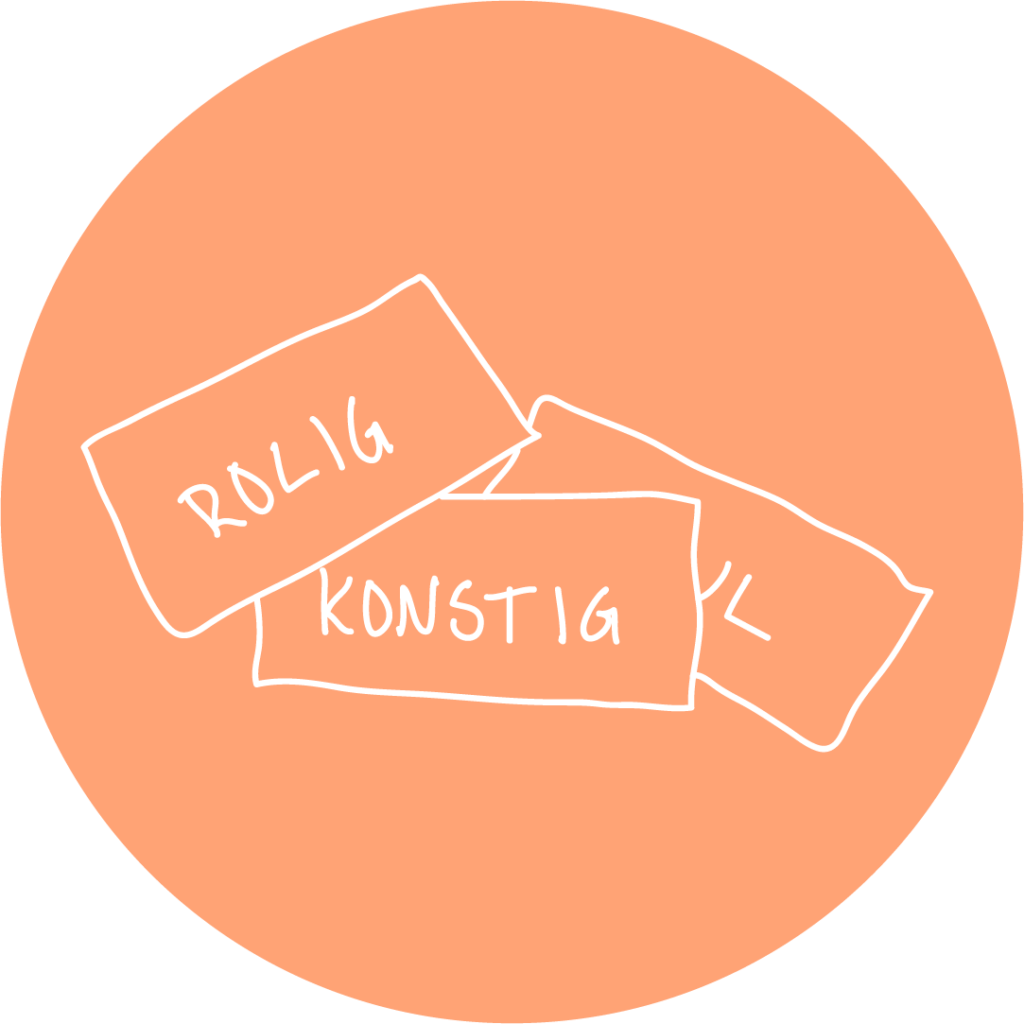Home / PHOTO TAGGING
Recommended age: 5-18 years
Place: Outdoors, but can be initiated indoors
Time required: 1-2 hours
Material/tools: Paper notes with adjectives and camera
Purpose: Mapping and visualisation of perspectives
Where in the process: Pre-Study

As an adult, you sometimes suspect that you can guess a lot of what children think. You’ve spent a lot of time with children, you’ve been a child, you have children, etc. Photo tagging is a method that humbles you. It manages to identify your own preconceived notions and at the same time peek from the children’s perspective in a way other methods cannot.
Photo tagging involves children tagging places themselves with appropriate descriptive words, and photographing the words in the places. The children are divided into small groups of about 3-4 and given a bunch of words in their hand, such as ‘adult’, ‘childish’, ‘stiff’, ‘exciting’. They then walk around the area they are exploring and discuss where different words fit. The adults shadow each group of children and take notes of their discussions and help them take photos.
Either download our word suggestions below or print your own. Cut them out and possibly laminate them so that there is one word per sheet. Remember to write in capital letters so that it can be read from a distance. Make a stack of words for each small group, so that all small groups work on the same word.
Take a walk around the site yourself beforehand and talk through which words you think the children will place where. This will help you to identify your own preconceptions about what the children think.
You will need one adult with a camera (mobile phones with cameras also work well) per small group of children. If there aren’t enough of you, check if there are educators or other adults who can help. Shadowing the children, listening to the children’s discussions and writing down their thoughts is what gives the exercise valuable insights.
Start indoors, in peace and quiet, by going through the words with the children. Reading the words, one by one, and talking about what they mean, gives you a common understanding of the meaning of the words. It also shows whether you have set the bar at the right level in terms of word understanding.
Divide the children into small groups and go on a hunt. Find a balance between encouraging the children when inspiration is lacking and keeping you as adults in the background. At the same time, ask questions to get them to develop their thoughts, but avoid overly leading questions.
Afterwards, it’s good if there is time for a whole group discussion about places and words and what the children were thinking when they took the photo.
Check that the adjectives are relevant to the target group. Also, check that everyone understands the adjectives included, so that there is a common understanding of the meaning of the words. If you are working with younger children who have not learnt to read, you can use pictures with the words. Documents with useful images can be found under downloadable resources.
Photo tagging works best as part of a pre-study for a larger process, as it leads to prior knowledge and understanding.
We have collected words that you can print out to use during photo tagging. However, so far only in Swedish.
There are three versions: 5-7 years, 8-12 years and 12-18 years. Words for 5-7 years can also be suitable for 12-18 years, but probably not the other way round.
The words used vary according to age, context, but of course also according to which words are modern. So add and remove – it should be words that are relevant to the children and to the area.
We use cookies to give you the best experience on our website. If you continue to use this website, you agree to the use of cookies.
Vi använder cookies för att ge dig den bästa upplevelsen på vår hemsida. Om du fortsätter att använda den här webbplatsen godkänner du detta.